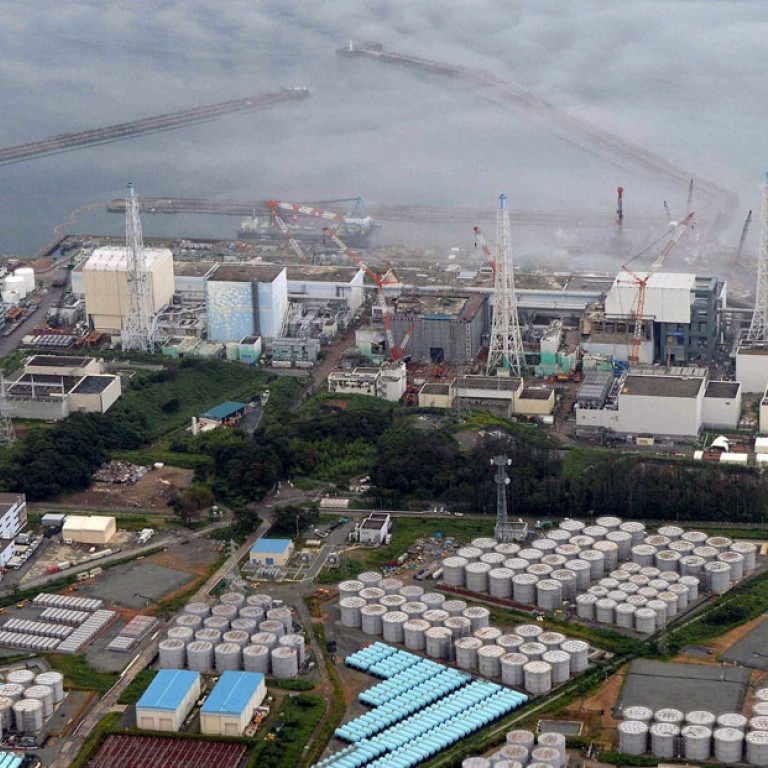
Nuclear debate must keep up with changing reactor technology
Behnam Taebi says our choices today will determine size of the toxic burden for future generations
Across the world, the contentious debate over the future of nuclear power continues apace. In East Asia, for instance, it emerged earlier this month that a nuclear plant in Taiwan may have been leaking radioactive water for three years. Meanwhile, Japan is still struggling to contain radioactive water from Fukushima; and, in South Korea, prosecutors are conducting a huge investigation into forged nuclear safety certificates.
The old controversies over nuclear reactors - their dangers, benefits and costs - remain at the fore. But as politicians, energy experts and the general public weigh the pros and cons, one key element in harnessing energy from the atom is being neglected.
That is, the link between the different methods of producing nuclear power and the nature - and longevity - of the radioactive waste that each method leaves behind. This in turn raises the issue of intergenerational justice: the technical choices we make today will determine the extent of the burden humanity will face in containing contaminated by-products that can remain radioactive for thousands of years.
While an increasing number of states are being swayed by the fact that nuclear power can enhance domestic energy security, produce large amounts of energy, and emit very low greenhouse gas by-products, critics nonetheless remain vociferous. They cite the risk of reactor accidents, the dangers of transporting nuclear fuel and fears of proliferation, and the vexing problem of how to deal with the long-lived nuclear waste.
However, little is said about the major distinctions between the various production methods, or nuclear fuel cycles. Rather than reducing nuclear power to a simple yes/no, good/bad dichotomy, we need to focus first on the advantages and disadvantages of each nuclear energy production method, including the burdens and benefits they pose now and in generations to come.
One of the key differentiating features between the various production methods is the nature of waste produced after irradiating fuel in a reactor. In the so-called open fuel cycle (common in the US and Sweden, for example) spent fuel is generally disposed of as waste that will remain radioactive for 200,000 years.
In the alternative, known as the closed fuel cycle, spent fuel is reprocessed to extract the redeployable uranium and plutonium, which are then re-entered into the fuel cycle. In the closed fuel cycle, the lifetime of radioactive waste is reduced to about 10,000 years.
Approached from the framework of intergenerational justice, there is a strong case for arguing that people living today should deal with the burdens of nuclear power because we enjoy the lion's share of the benefits. Thus, from a moral point of view, if we want to keep developing nuclear power, the closed fuel cycle is preferable.
However, the closed cycle brings about another dilemma, as it creates short-term safety, security and economic burdens for people currently alive.
Nuclear reprocessing itself is a complex and costly chemical process. More importantly, the plutonium separated during reprocessing in the closed cycle method raises the risk of nuclear-weapon proliferation.
A nuclear bomb with the yield of the Nagasaki bomb could be manufactured with a couple of kilograms of plutonium. Even though civilian plutonium emanating from energy reactors is not weapon-grade and directly usable for a bomb, it still has some destructive powers. We need to ensure that promoting the closed cycle method does not lead to the spread of even more nuclear weapons.
But there is an even better prospect for easing the future burden: the development of so-called fast reactors capable of reducing the lifetime of radioactive waste to a couple of hundred years. This involves the development of extended closed fuel cycles based on multiple recycling and new reactor technology. This method, referred to as "partitioning and transmutation", has been scientifically proven but may require decades of development before it can be practically applied. Nonetheless, it represents a potential breakthrough that could genuinely transform the debate.
The International Atomic Energy Agency estimates that around 50 countries will have nuclear reactors by 2030 - up from 29 today, meaning the more than 430 nuclear reactors currently operable around the world will be joined by more than 500 others within the next few decades. This trend doesn't make the debate about nuclear any less contentious.
The debate needs to become more inclusive of future technological prospects - and more reflective of the quest for intergenerational justice. It is only on those terms that we can compare nuclear with other energies, such as coal, which can help us answer the thorny question of whether nuclear power has a role to play in the future energy mix and combating climate change.
